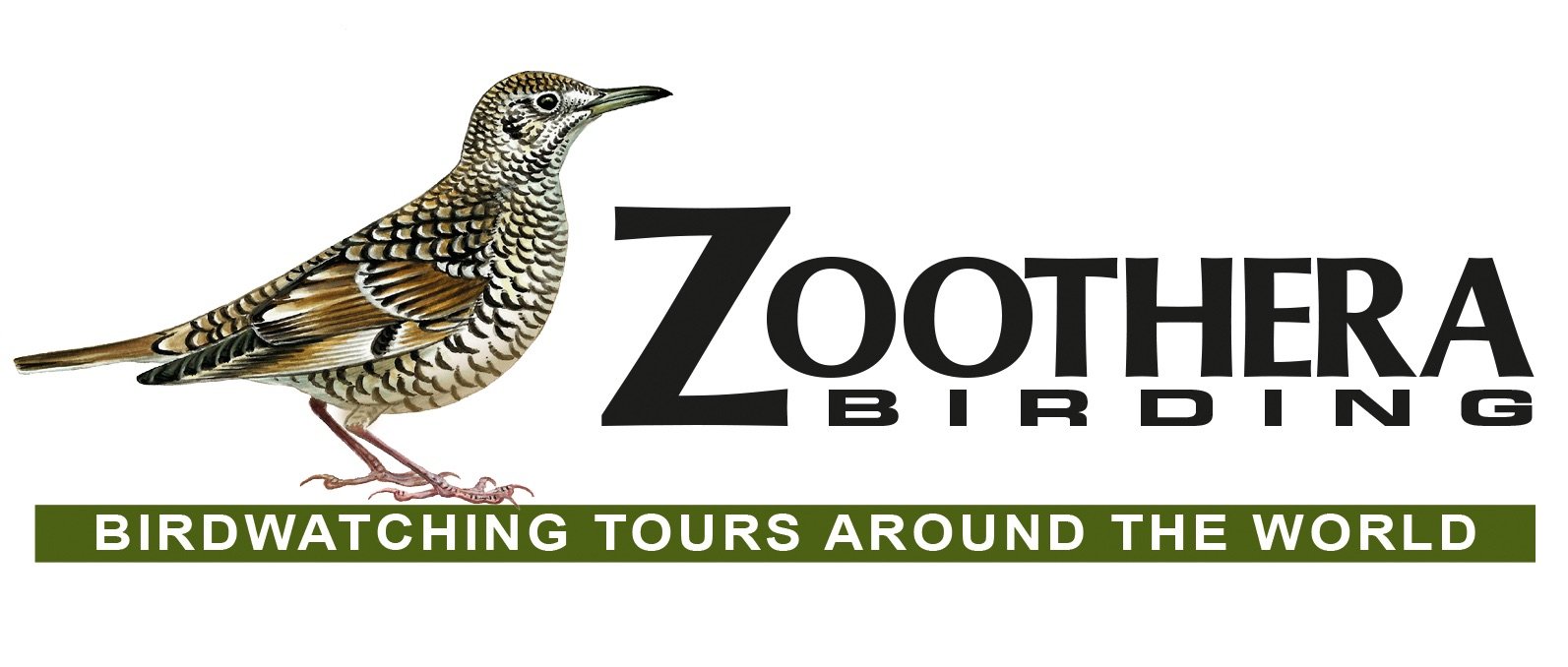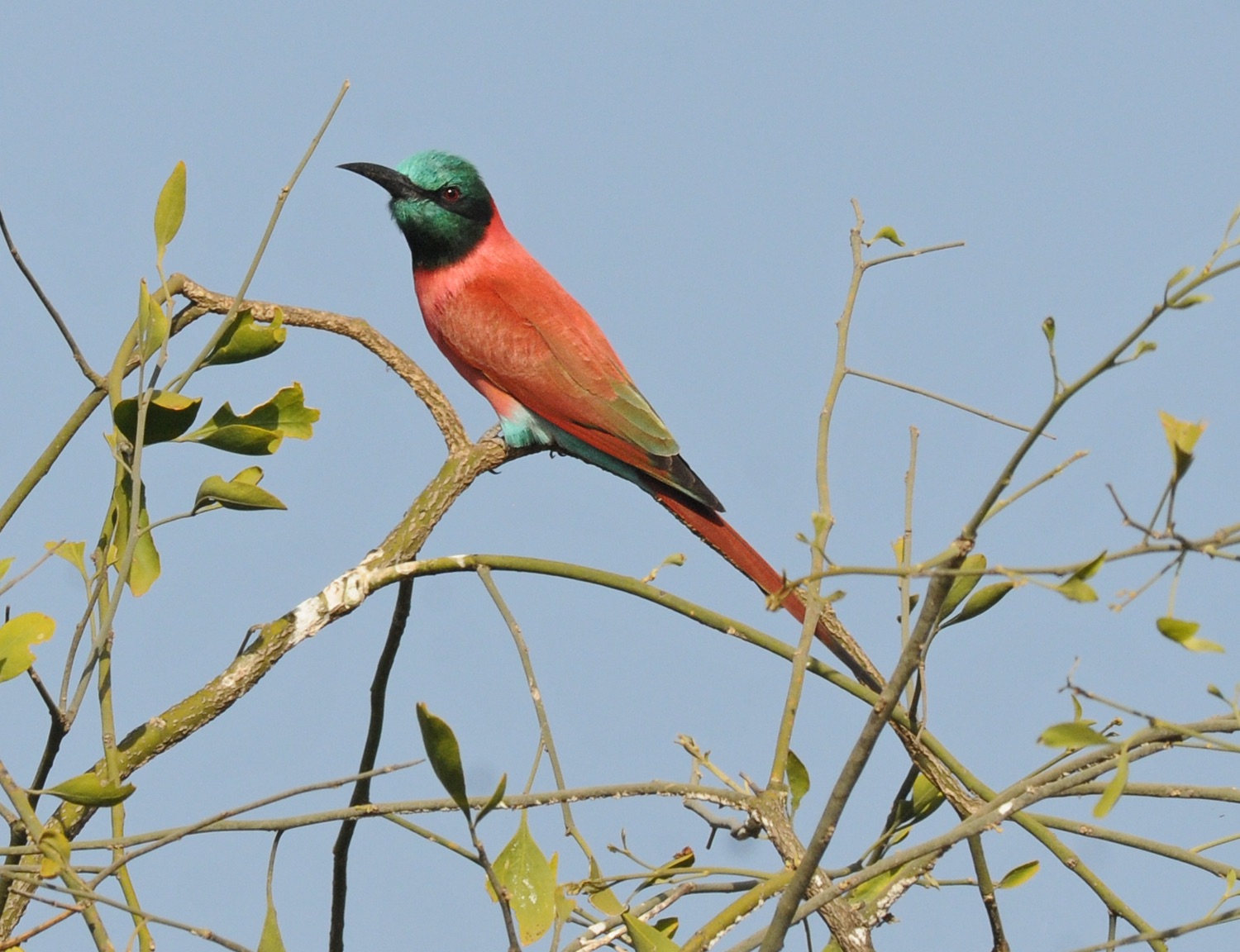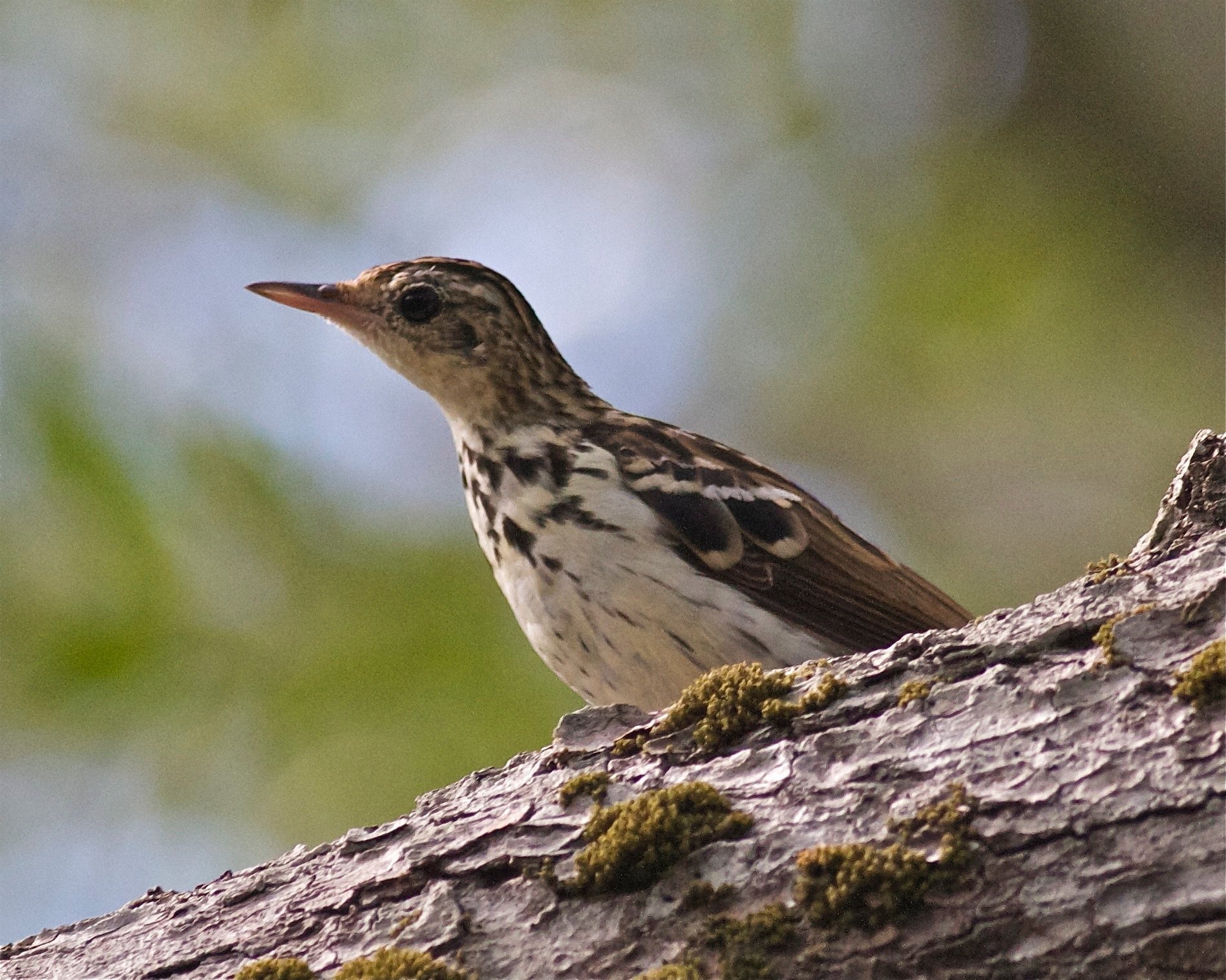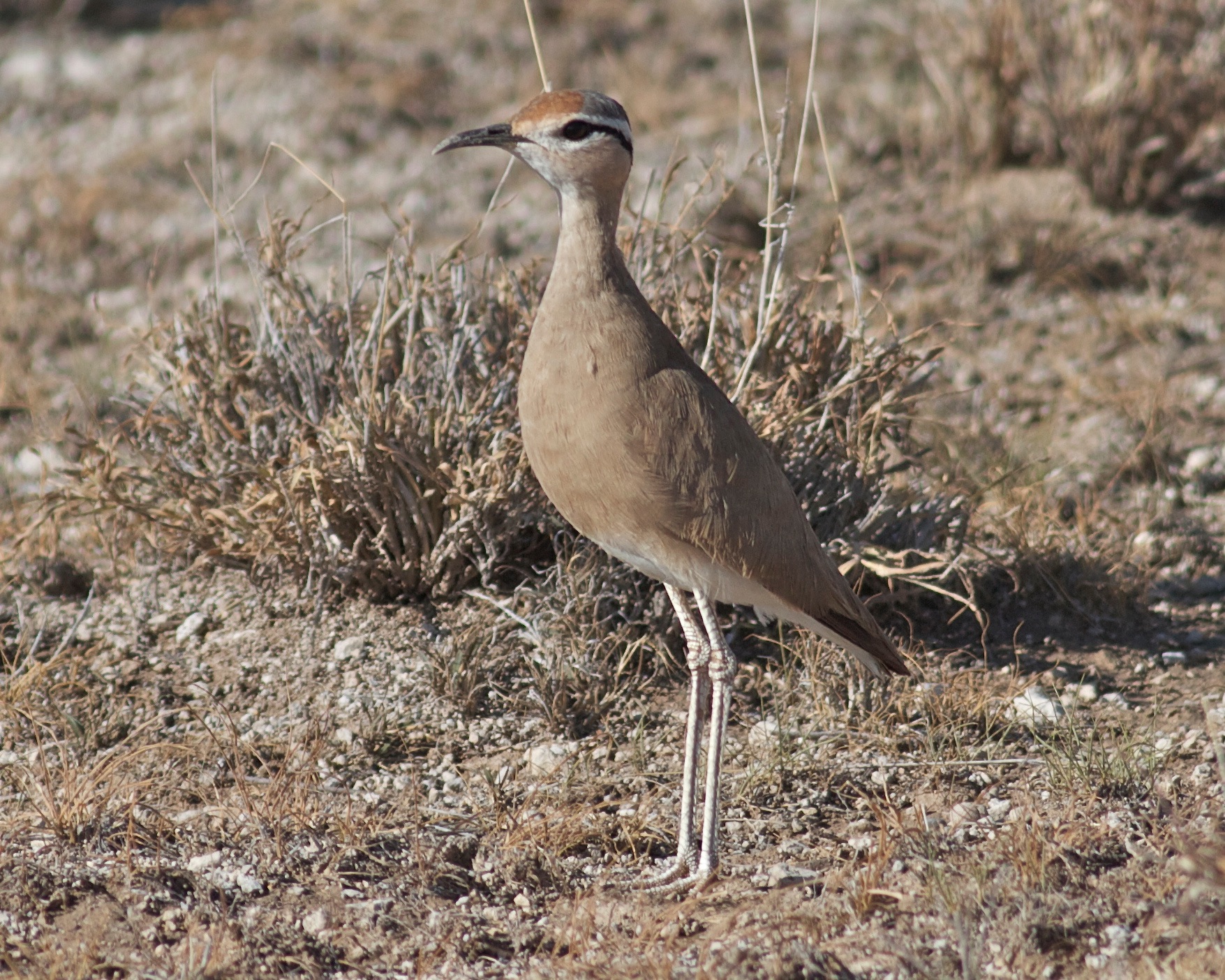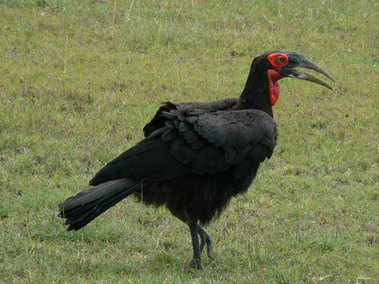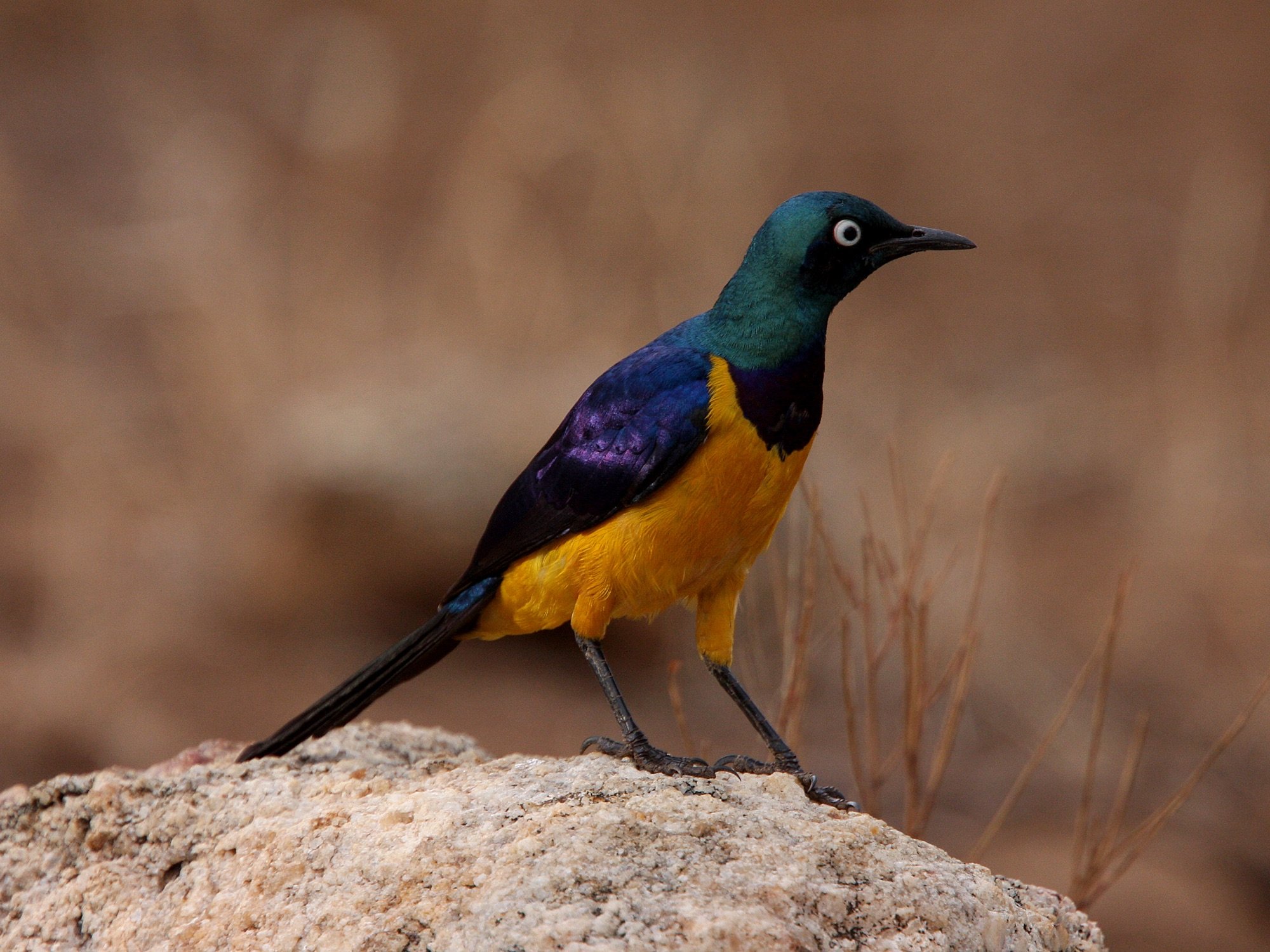KENYA SPECIALITIES - Sokoke to Kakamega and Beyond!
Day 1 ARRIVAL IN NAIROBI - MALINDI - 22ND SEPTEMBER
Plan on arriving today at the Jomo Kenyatta International Airport and connect with a flight to the Malindi airport.
Days 2 - 3 ARABUKO-SOKOKE FOREST - DAKACHA - MIDA CREEK
Early morning birding in Arabuko-Sokoke Forest where our main targets are Sokoke Pipit, Amani Sunbird, Spotted Ground Thrush and East Coast Akalat. Other birds to be expected within this forest reserve include Southern Banded Snake-Eagle, African Goshawk, Mangrove Kingfisher, Thick-billed Cuckoo, Fischer’s Turaco, Green Barbet, Eastern Green Tinkerbird, Mombasa & Green-backed Woodpeckers, Scaly-breasted, Lesser & Pallid Honeyguides, Forbes-Watson's Swift, Common Scimitarbill, Narina Trogon, Ethiopian Swallow, Sokoke Pipit, Tiny, Yellow-bellied & Fischer’s Greenbuls, Red-tailed Ant-thrush, Red-capped Robin-chat, Eastern Bearded Scrub-Robin, Four-coloured Bush-Shrike, Eastern Nicator, Forest & Pale Batis, Little Yellow Flycatcher, Blue-mantled Crested-Flycatcher, Collared Palm-Thrush, Coastal Cisticola, Scaly Babbler, Violet-breasted & Plain-backed Sunbirds, African Golden Oriole, both Retz’s & Chestnut-fronted Helmet-shrikes, Green & Peters’s (Red-throated)Twinspots and Dark-backed Weaver.
In the evening we will be searching for several nocturnal species including the endangered Sokoke Scops-Owl, African Barred Owlet, African Wood-Owl and the colourful Fiery-necked Nightjar. Four-toed and Golden-rumped Elephant Shrews (the latter being critically-endangered) are both found in the Arabuko-Sokoke Forest, but are very shy and difficult to see. Occasionally, nocturnal mammals such as White-tailed Mongoose, Honey Badger or even the stunning Caracal can be found here. Of course it helps to have a little bit of luck with these!
The following morning we will drive to Dakacha woodland looking for the Endangered Kenyan endemic Clarke’s Weaver. Other species in the area include Red-headed Quelea and Violet-breasted Sunbird. Then we will move on to the Sabaki River and/or Mida Creek where there can be large numbers of shorebirds and we can look for the stunning Crab-Plover. This area is usually teeming with waders and waterfowl and species usually present include Great White & Pink-backed Pelicans, Madagascar Pratincole, Black-winged Stilt, Pied Avocet, White-fronted Plover, Sooty Gull, Lesser & Greater Crested Terns, Saunders’s Tern and sometimes African Skimmer. Nearby reeds sometimes hold Fire-fronted and Zanzibar Red Bishops. Rarities pop up in this area all the time and it is exciting to think what we may find. In the latter part of the morning we will try and find the extremely local Malindi Pipit and after our birding is finished we will head back to our excellent hotel for some well-deserved rest and relaxation.
Day 4 TSAVO EAST NATIONAL PARK - TAITA HILLS
An early start will see us visit Tsavo East National Park on our journey to the Taita Hills where we will spend the night. We will be birding all day seeing many truly iconic African birds and there’s a lot to see here: Somali Ostrich, Yellow-necked Spurfowl, Vulturine Guineafowl, White-bellied & Buff-crested Bustards, Three-banded & Somali Coursers, Caspian Plover, Black-faced Sandgrouse, African Openbill, Secretarybird, Martial Eagle, Black-chested & Brown Snake-eagles, Bateleur, African Harrier-Hawk, White-headed, Lappet-faced & Ruppell’s Griffon Vultures, Gabar Goshawk, Eastern Chanting Goshawk, Steppe Buzzard, Montagu ́s Harrier, Northern Red-billed, Von der Decken's, African Grey & Crowned Hornbills, Purple Roller, Little, White-throated, Blue-cheeked & Somali Bee-eaters, Lesser Kestrel, Brown-headed Parrot, African Pygmy & Striped Kingfishers, African, Common & Diederik Cuckoo, Red-fronted Tinkerbird, Red-and-yellow Barbet, Bearded, Nubian & Cardinal Woodpeckers, Red-faced Crombec, Black Cuckooshrike, Banded Martin, Golden Pipit, Rosy-patched & Red-naped Bushshrikes, Green Wood-Hoopoe, Singing, Red-winged & Pink-breasted Larks, Northern Brownbul, Chestnut-backed Sparrow-Lark (seasonal), White-crested Helmetshrike, White-throated Robin, Banded Parisoma, Fork-tailed Drongo, Pygmy Batis, Red-throated Tit, Three-streaked Tchagra, Buff-bellied Warbler, Yellow-bellied Eremomela, Upcher's Warbler, Bare-eyed Thrush, Brown-crowned Tchagra, Tsavo Purple-banded Sunbird, Pale Prinia, Jameson’s Firefinch, Red-billed Quelea, Chestnut-backed & Chestnut-headed Sparrow-Larks, Golden Pipit, African Silverbill, Wattled & Golden-breasted Starlings, Chestnut & Speke’s Weavers, Grey-capped Social-Weaver, and the elegant Eastern Paradise-whydah are some of the birds we may see. There are sometimes reports of the stunning African Swallow-tailed Kite, but this is far south from their normal range and it must be assumed this species is a rarity here. Of course there will be plenty of the usual mammals on view to keep us entertained. Night near Taita Hills.
Day 5 TAITA HILLS - TSAVO WEST NP
After an early breakfast we'll head up into the Taita Hills where we‘ll spend the morning in a remnant patch of forest primarily searching for three endemics - Taita Apalis, Taita White-eye and Taita Thrush. There are a few other species that occur nowhere else in Kenya such as Stripe-cheeked Bulbul, Evergreen Forest Warbler and Yellow-throated Woodland Warbler. Other birds in this small woodland include African Crowned Eagle, Mountain Buzzard, sometimes Taita Falcon, Moustached Green Tinkerbird, Hartlaub’s Turaco, Orange Ground-Thrush, Striped Pipit, Olive Sunbird, Placid Greenbul, Starred Robin, Sharpe’s & Abbott’s Starling and Green Twinspot amongst others. Once we are finished here we will drive to Tsavo West National Park where we will overnight inside the park.
Day 6 TSAVO WEST NATIONAL PARK
We have an exciting moning's birding in Tsavo West National Park, one of the largest parks in the world and is also one of the wildest areas left on the planet. The park consists of many habitat types, but thick bush country is the most prevalent. Amongst many possibilities we could see Black-faced Sandgrouse, Crowned Hornbill, Red-chested Cuckoo, Verreaux’s Eagle-Owl, Giant Kingfisher, Nubian Woodpecker, Short-tailed Lark, Northern Brownbul, Eastern Nicator, Spotted Morning-Thrush, Lesser Swamp Warbler, Grey-backed Camaroptera, Northern Crombec, Ashy & Lead-coloured Flycatchers, Grey-headed Bush-Shrike, Black-headed-Batis, Retz’s Helmet-Shrike, African Golden-Weaver, Green-winged Pytilia, Peters’s Twinspot and the local Jameson’s Firefinch.
Other avian possibilities in Tsavo West also include Common Ostrich, Hildebrandt's & Crested Francolins, Spur-winged Goose, African Darter, Goliath & Black Herons, Hamerkop, Secretarybird, Steppe, Tawny & Verreaux’s Eagles, Southern Banded Snake-Eagle, African Hawk-Eagle, Grasshopper Buzzard, Pygmy Falcon, White-bellied & Hartlaub ́s Bustards, Water Thick-knee, Two-banded Courser, Collared Pratincole, Verreaux's Eagle-Owl, Slender-tailed & Freckled Nightjars, Jacobin, Great Spotted & Diederik Cuckoo, Yellow-billed & Southern Ground Hornbills, Blue-cheeked Bee-eater, Sooty & Amur Falcons, African Hoopoe, Mottled & African Black Swifts, Banded Martin, D ́Arnauds & Spot-flanked Barbets, Cardinal Woodpecker, Green Wood-Hoopoe, Eastern Yellow-billed Hornbill, White-bellied Go-Away-Bird, Abyssinian Scimitarbill, Three-streaked & Black-crowned Tchagra, Lesser Grey & Red-backed Shrikes, Black-backed & Pringle's Puffbacks, Long-tailed Fiscal, Brown-crowned, Black-crowned & Three-streaked Tchagras, Rosy-patched, Grey-headed & Orange-breasted Bush-Shrikes, Dodson’s Bulbul, African Grey & Pale Flycatchers, Rufous & Scaly Chatterers, Somali (Acacia) Tit, African & Mouse-coloured Penduline-Tits, Black-billed (Amethyst), Hunter’s, Tsavo & Kenya Violet-backed Sunbirds, Pygmy Batis, Brubru, Common Rock Thrush, African Black-headed Oriole, Yellow-billed & Red-billed Oxpeckers, White-necked Raven, Red-billed & Yellow-billed Ox-peckers, Hildebrandt ́s, Fischer ́s, Violet-backed, Ruppell's, Magpie & Golden-breasted Starlings, White-headed & Red-billed Buffalo-Weavers, Black-necked, Lesser Masked, Vitelline Masked, Village & Red-headed Weavers, Taveta (Golden) Weaver, Black-capped Social-Weaver, African Quail-Finch, Long-tailed Paradise, Steel-blue & Pin-tailed Whydahs, Southern Grosbeak-Canary, Chestnut Sparrow, Reichenow’s (Kenya Yellow-rumped) Seedeater and the magnificent Somali Bunting.
Mammals could include African Crested Porcupine, Yellow Baboon, Blue Sykes’s Monkey, Black-faced Vervet Monkey, Scrub Hare, Unstriped Ground-Squirrel, Black-backed Jackal, Lion, Bush Hyrax, Common (Burchell’s) Zebra, Hippopotamus, Common Warthog, Masai Bushbuck, the elegant Lesser Kudu, Klipspringer, Kirk’s Dikdik, Bush Duiker, Bohor Reedbuck, Common Waterbuck, Grant’s Gazelle, Impala, Coke’s Hartebeestt, the impressive Fringe-eared Oryx and if we are incredibly lucky, the rare African Wild Dog are just a few of the mammals we may locate during our visit to Tsavo West. Night in Nairobi.
Day 7 LAKE NAIVASHA
Our destination this morning is the incomparable Lake Naivasha where we can enjoy the iconic birds and wildlife we've all seen on our tv's. We will be looking for the stunning Grey-crested Helmetshrike, as well as Black-lored Babbler, and White-headed Barbet, before heading to the Kinangop Plateau grasslands and looking for the endemic Sharpe’s Longclaw. Other possibilities here include Jackson’s, Long-tailed & Red-collared Widowbirds, African Citril, Stout, Wing-snapping & Levaillant's Cisticolas, Brimstone Canary, Anteater Chat, Speke’s Weaver, Cape Wagtail, and many more. Overnight in Naivasha.
Day 8 LAKE VICTORIA
Early morning drive to Kisumu birding around Lake Victoria looking for Papyrus Gonolek, Papyrus Canary, Papyrus Yellow Warbler, Black-headed Gonolek, African Thrush, Swamp Flycatcher, Carruther’s Cisticola, Great Swamp Warbler, Slender-billed, Northern Brown-throated Weaver & Black-headed Weavers, the skulking White-winged Swamp Warbler, Red-chested Sunbird, Double-toothed Barbet, and many more. In the afternoon we will drive to Kakamega Rainforest for a 3 night stay.
Days 9 - 10 KAKAMEGA FOREST
We have two full days birding in the fabulous Kakamega Forest, where our prinary target is the skulking Grey-chested Babbler. Formerly called Grey-chested Illadopsis, it is in a small family with the ultra-skulking Dapple-throat & Spot-throat found in the Eastern Arc Mountains of Tanzania. Along with this species, we will make every effort to find Blue-headed Bee-eater, the range-restricted Turner's Eremomela, and canopy-dwelling Uganda Woodland Warbler. We always love the really skulking species so there's plenty to get our teeth into such as Brown-chested Alethe, Equatorial Akalat, Scaly-breasted, Mountain & Brown Illadopsis as well.
Other species present include White-spotted Flufftail, Black-and-White Casqued Hornbill, Great Blue, Black-billed & Ross’s Turaco, Yellow-crested Woodpecker, Hairy-breasted, Yellow-spotted, Yellow-billed & Grey-throated Barbets, White-headed Saw-wing, White-headed Wood Hoopoe, Petit’s Cuckooshrike, Pink-footed Puffback, Mackinnon’s Fiscal, Least Honeyguide, Joyfull, Cabanis’s, Kakamega, Toro Olive, Ansorge’s & Honeyguide Greenbuls, Red-tailed Bristlebill, Bocage’s & Lühder’s Bushshrikes, Blue-shouldered, Grey-winged & Snowy-crowned Robin Chat, White-tailed Ant-Thrush, Chubb’s Cisticola, African Shrike-Flycatcher, African Blue Flycatcher, Dusky Crested Flycatcher, Banded & White-chinned Prinias, Black-faced Rufous Warbler, Green Hylia, Brown-throated, Jameson’s, Yellow-bellied & Chestnut Wattle-eye, Olive-bellied Sunbird, Red-bellied Malimbe, Red-headed Bluebill, Black-billed Weaver, Vieillot’s Black Weaver, Stuhlmann’s Starling, White-breasted Nigrita, Olive-green Camaroptera, Sharpe’s Drongo and many more. Nights in Rainforest Lodge.
Day 11 KAKAMEGA - KAPENGULIA - KITALE
Morning birding in Kakamega if needed, before driving to Kapengulia where we will look for Fox Cisticola, Yellow-billed Shrike, Spotted Creeper, Green-Capped Eremomela, Blue-eared Starling, Heuglin’s Masked Weaver, Chestnut-backed Sparrow Weaver, and more. Overnight in Kitale.
Days 12 - 13 LAKE BARINGO
Morning drive to Lake Baringo, where we have plenty of time to explore the area. Targets here include Black-headed Lapwing, Three-banded Courser, Verreaux’s Eagle, Greyish Eagle-Owl, African Scops Owl, Northern White-faced Owl,Slender-tailed Nightjar,White-crested Turaco,Hemprich's & Jackson's Hornbills, Brown Babbler, Mocking Cliff-Chat,Brown-tailed Rock Chat, Pale Prinia,Shinning Sunbird, Gambaga Flycatcher & White-billed Buffalo Weaver amongst others. Night at Baringo.
Day 14 LAKE BARINGO - NANYUKI
We can spend the morning birding in Baringo before heading to Nanyuki, where we will spend the night. Along the way we will stop to look for Cape (Mackinder's) Eagle-Owl. Night near Nanyuki.
Day 15 MARSABIT
It's a long drive north to the arid thorn bush and desert environs of Marsabit area, and not normally a site on the regular birding circuit, where we will spend the night. Possibilities are many and varied on the drive but roadside birding should include species such as Abyssinian Roller, Crested, Thekla Lark & Short-tailed Larks, Somali Fiscal, White-crowned Starling, Chestnut-headed Sparrow-Lark, Somali Crombec, Magpie Starling, Swainson's Sparrow and Somali Crow. Later this afternoon we will search for Heuglin's Bustard at a couple of good locations for this species, whilst the other major target will be Masked Lark, with an outside chance of Collared Lark and Fox Kestrel. Night in Marsabit.
Day 16 MARSABIT - SAMBURU
Early morning birding in the Marsabit area for the maon targets once again, before we drive to Samburu for evening birding. Species today could include: Somali Ostrich, Vulturine Guineafowl, Lichtenstein's Sandgrouse, Marico Sunbird, Eastern Violet-backed Sunbird, Magpie Starling, Brown-tailed Apalis, White-headed Mousebird, Somali Sparrow, Acacia Tit, Black-cheeked Waxbill, and many more. Night in Samburu.
Day 17 SHABA NATIONAL RESERVE - BUFFALO SPRINGS NATIONAL RESERVE
Morning birding once again in Samburu and Shaba areas, exploring the riverine woodland, grassland, acacia savanna and thorn-bush for a huge list of possibilities. One of our key target species is Williams's Lark amidst a bleak lava plain. The same area also holds (occasionally) the mega rare Friedmann's Lark, along with Brown-tailed Rock Chat & Donaldson Smith’s Sparrow-Weaver. And there's also chances of Masked Lark too.
Just to whet tha appetite, there's a fantastic selection of superb and typical African birds present and include White-bellied & Buff-crested Bustards, Lappet-faced Vulture, Gabar Goshawk, Martial Eagle, Secretarybird, African Hawk-Eagle, Pygmy Falcon, Somali Courser, Pearl-spotted Owlet, Purple Roller, Somali Bee-eater, Red-fronted Tinkerbird, Black-throated Barbet, Nubian, Bearded, African Grey & Cardinal Woodpeckers, Pringle's Puffback, Foxy Lark, Pale Prinia, Grant's Wood-Hoopoe, Brown-tailed Apalis, Banded Parisoma, Spotted Palm Thrush, Pygmy Batis, Bristle-crowned Starling, Chestnut Sparrow, Yellow-spotted Petronia, Chestnut-headed & Fischer's Sparrow-Larks, Black-capped Social Weaver, Speckle-fronted, Vitelline Masked, Lesser Masked & Chestnut Weavers, Green-winged Pytilia, Cut-throat Finch, Purple Grenadier, Crimson-rumped & Black-cheeked Waxbills, and Somali Bunting. Overnight in Buffalo Springs.
Day 18 BUFFALO SPRINGS - MOUNT KENYA
Early morning birding in Buffalo Springs before driving to Mount Kenya, stopping along the way looking for Boran Cisticola. Once we have reached Mount Kenya our priority target will be Elgon Francolin, which requires quite a steep, uphill hike. we could also see Abyssinian Ground-Thrush, Overnight in Nyeri.
Day 19 ABERDARE - CASTLE FOREST
Early morning search for the endemic Hinde's Babbler before driving to Aberdare and evening drive to Castle Forest. Targets in Aberdare’s: Jackson's Spurfowl, Aberdare Cisticola,, Kikuyu White-eye, Scarlet-tufted Sunbird, Malachite Sunbird, Golden-winged Sunbird, Moorland Chat, and more. There's a fine supporting cast that includes Dusky Turtle Dove, Cape Wagtail, Cape Robin-Chat, Singing Cisticola, Mountain Yellow Warbler, Northern Pied Babbler, Holub’s Golden Weaver, Red-cowled Widowbird and African Citril.
Day 20 CASTLE FOREST
Full day birding in Castle Forest Targets: Olive Ibis, Red-fronted Parrot, Tullberg’s Woodpecker, Kikuyu White-eye, Barred Long-tailed Cuckoo, Yellow-whiskered Greenbul, Slender-billed Greenbul, Olive-breasted Greenbul, White-headed Wood-Hoopoe, Purple-throated Cuckooshrike, Black-collared Apalis, Grey Apalis, Black-throated Apalis, Chestnut-throated Apalis, Northern Double-collared Sunbird, Eastern Double-collared Sunbird, Green-headed Sunbird, Tacazze Sunbird, Montane Oriole, Kandt’s Waxbill, Yellow-crowned Canary, Thick-billed Seedeater, and many more. Overnight in Castle Forest.
Day 21 CASTLE FOREST - NAIROBI - END OF TOUR - 12TH OCTOBER
Morning birding in Castle Forest and then drive back to Nairobi where the tour concludes this evening.

